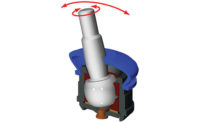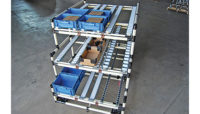The Coiled Spring Pin was invented by Herman Koehl in 1948. Easily recognized by its unique 2¼ coil cross section, Coiled Pins are retained by radial tension when installed into the host component, and they are the only pins with uniform strength and flexibility after insertion.
Coiled Spring Pins, commonly referred to as Roll Pins, are often used in applications traditionally assembled with Solid Pins. There is a common misconception that “Solid Pins are always stronger than Coiled Pins”. The fact is, the majority of the applications use low carbon steel Solid Pins and for those that use Coiled Pins, the most common is a heat treated high carbon steel, standard duty Coiled Pin.
When comparing the strength of low carbon steel Solid Pins to the strength of high carbon steel, standard duty Coiled Pins, the Coiled Pins are stronger. This is due to the combination of the volume of the Coiled Pin material and the fact that the material is heat treated. Heat treating imparts strength and flexibility to the Coiled Pin, and results in the Coiled Pin being over 15% (on average) stronger than Solid Pins (Table 1).
Table 1: Strength of standard duty Coiled Pins compared to Solid Pins
One of the primary advantages of Coiled Pins over Solid Pins is that Coiled Pins are available in three “duties” to enable the designer to choose the optimum combination of strength, flexibility and diameter to suit different host materials and application requirements. Proper designs will ensure that the Coiled Pin is strong enough to resist the forces generated during use of the assembly, and that the pin is flexible enough to prevent any damage to the hole. The Coiled Pin distributes static and dynamic loads equally throughout its cross section without a specific point of stress concentration. Furthermore, its flexibility and shear strength are unaffected by the direction of the applied load, and therefore, the pin does not require orientation in the hole during assembly to maximize performance.
In dynamic assemblies, impact loading and wear often lead to failure in rigid components. Coiled Pins are designed to remain flexible after installation and are an active component within the assembly. The Coiled Pin’s ability to dampen shock/impact loads and vibration prevents hole damage and ultimately prolongs the useful life of an assembly.
SPIROL Engineers are available to assist you in selecting the proper Coiled Pin for your assembly, or feel free to access our White Paper “How to Select the Proper Diameter and Duty of a Coiled Spring Pin” here goo.gl/a5bsgE.







